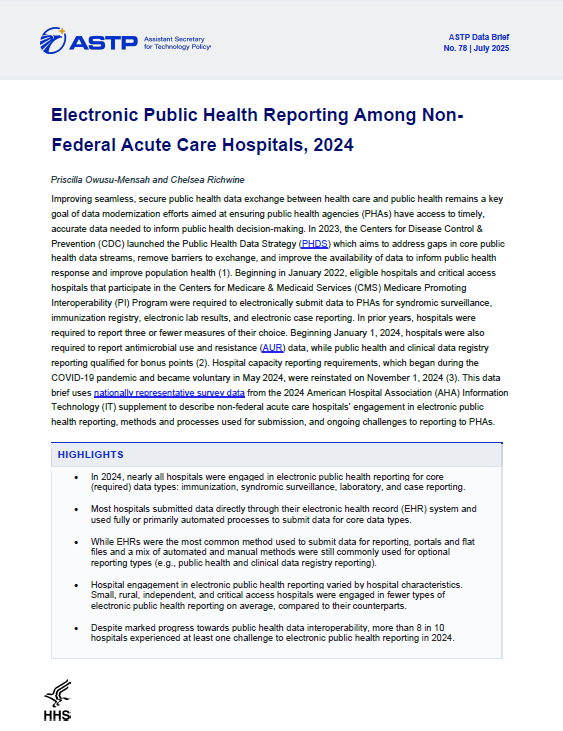
Improving seamless, secure public health data exchange between health care and public health remains a key goal of data modernization efforts aimed at ensuring public health agencies (PHAs) have access to timely, accurate data needed to inform…
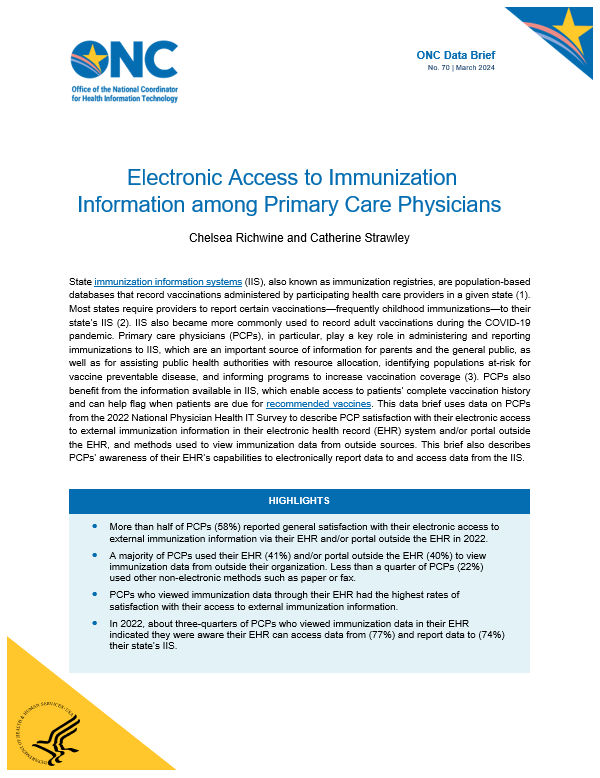
State immunization information systems (IIS), also known as immunization registries, are population-based databases that record vaccinations administered by participating health care providers in a given state (1). Most states require providers to…
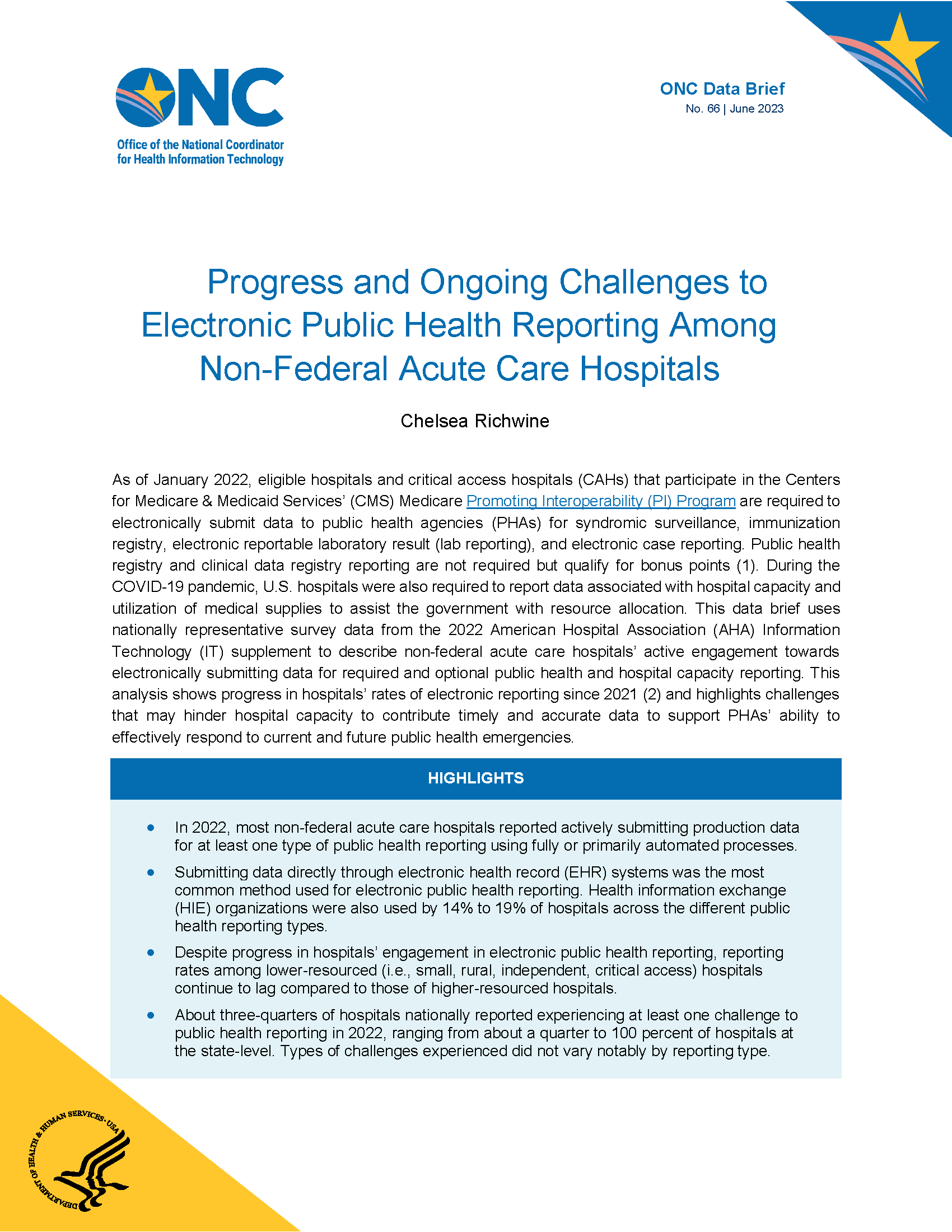
As of January 2022, eligible hospitals and critical access hospitals (CAHs) that participate in the Centers for Medicare & Medicaid Services’ (CMS) Medicare Promoting Interoperability (PI) Program are required to electronically submit data to…
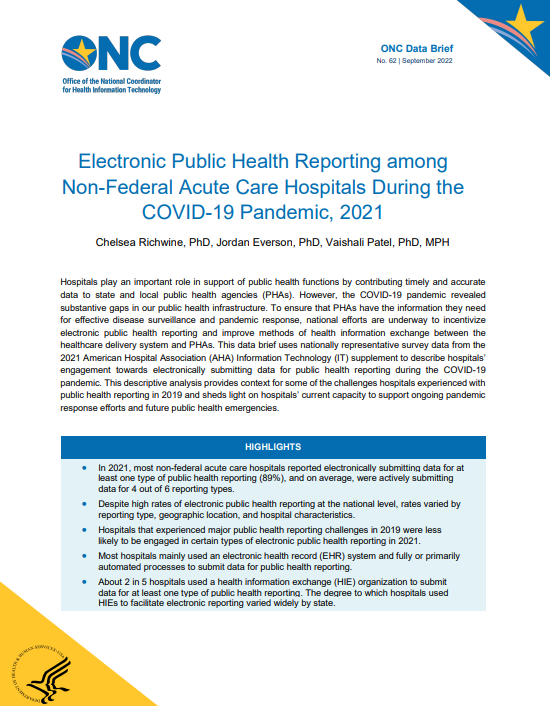
Hospitals play an important role in support of public health functions by contributing timely and accurate data to state and local public health agencies (PHAs). However, the COVID-19 pandemic revealed substantive gaps in our public health…
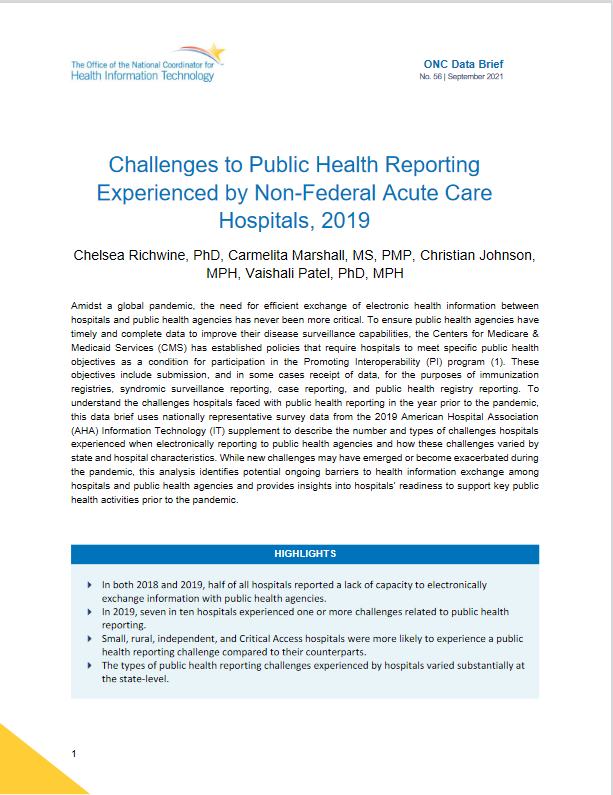
Amidst a global pandemic, the need for efficient exchange of electronic health information between
hospitals and public health agencies has never been more critical. To ensure public health agencies have
timely and complete data…
![Variation in Methods for Health Information Management among U.S. Substance Abuse Treatment Centers, 2017 [pdf]](/sites/default/files/2021-07/substance-abuse-treatment-center-health-information-management-2017.png)
More than 20 million Americans suffer from a substance use disorder (SUD) each year. For these individuals, treatment is designed to help stop or reduce harmful substance misuse, improve health and social function, and manage risk for relapse.…
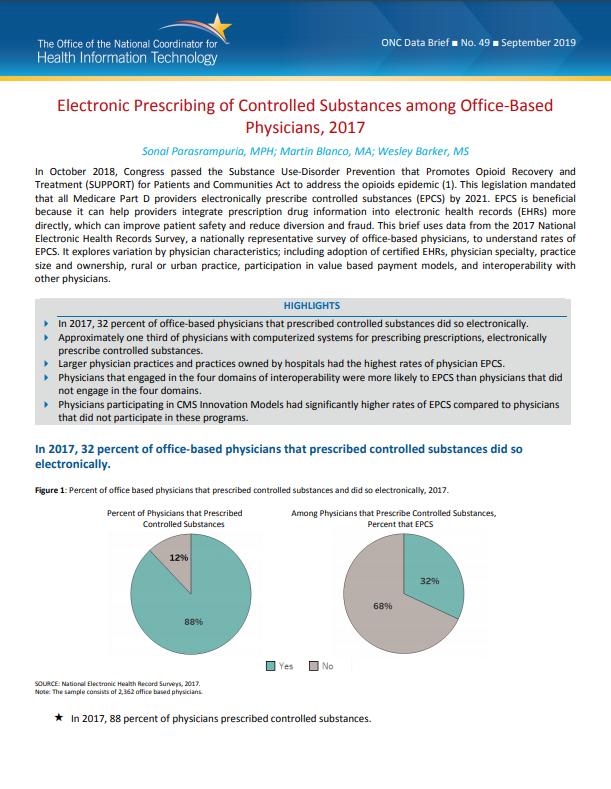
EPCS is beneficial because it can help providers integrate prescription drug information into electronic health records (EHRs) more directly, which can improve patient safety and reduce diversion and fraud. This brief uses data from the 2017…
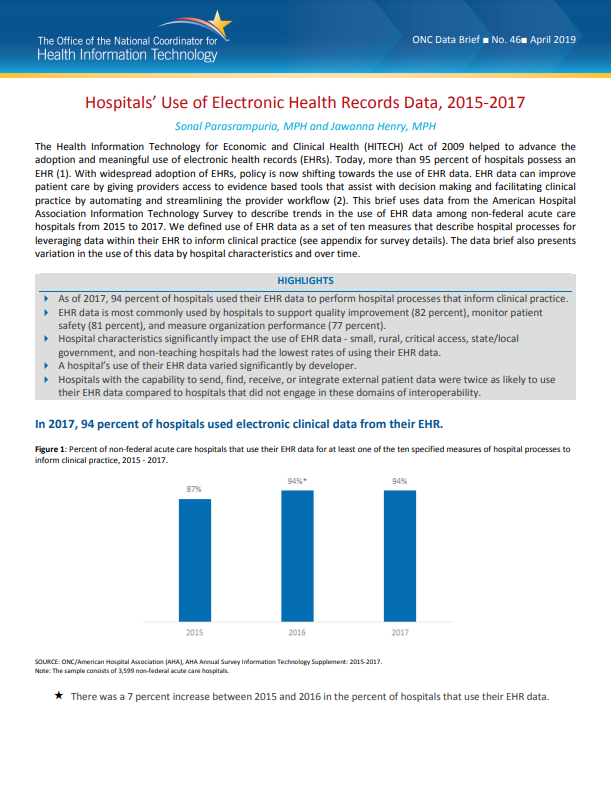
With widespread adoption of EHRs, policy is now shifting towards the use of EHR data. EHR data can improve patient care by giving providers access to evidence based tools that assist with decision making and facilitating clinical practice by…
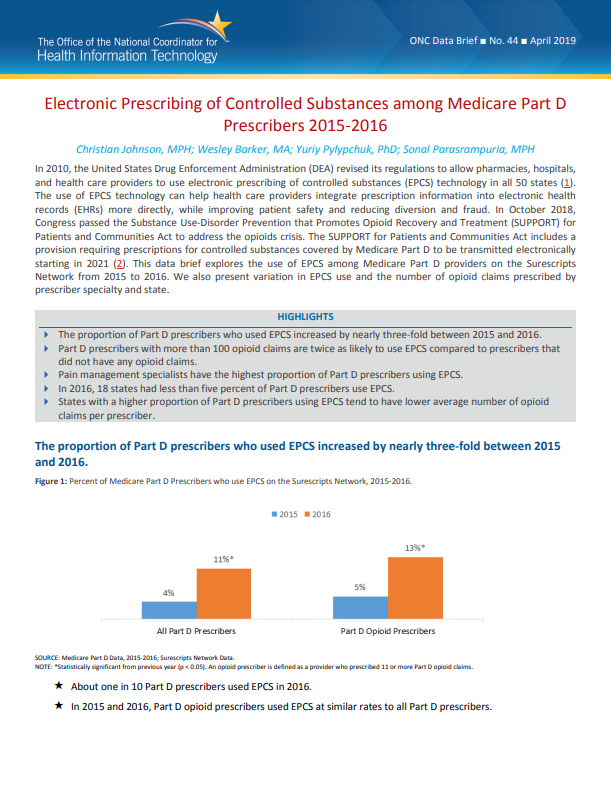
The use of EPCS technology can help health care providers integrate prescription information into electronic health records (EHRs) more directly, while improving patient safety and reducing diversion and fraud. In October 2018, Congress passed the…
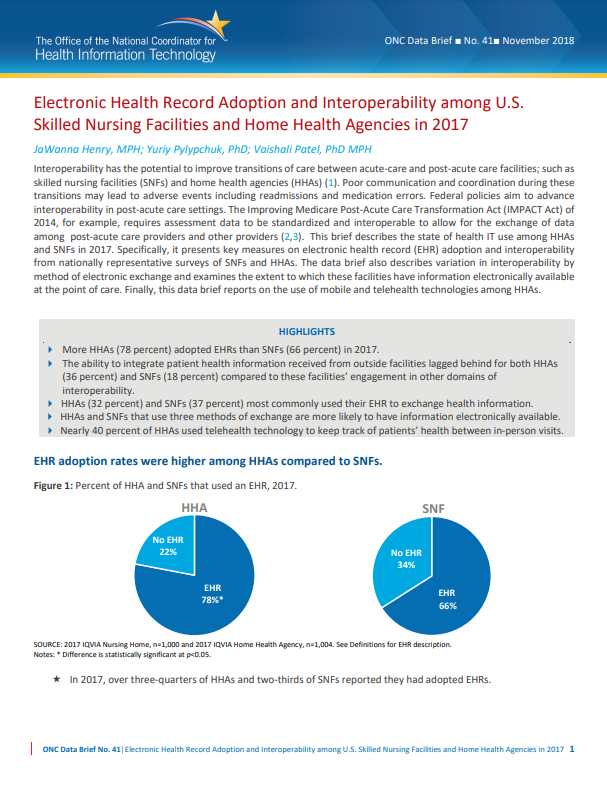
This brief describes the state of health IT use among HHAs and SNFs in 2017. Specifically, it presents key measures on electronic health record (EHR) adoption and interoperability from nationally representative surveys of SNFs and HHAs. The data…
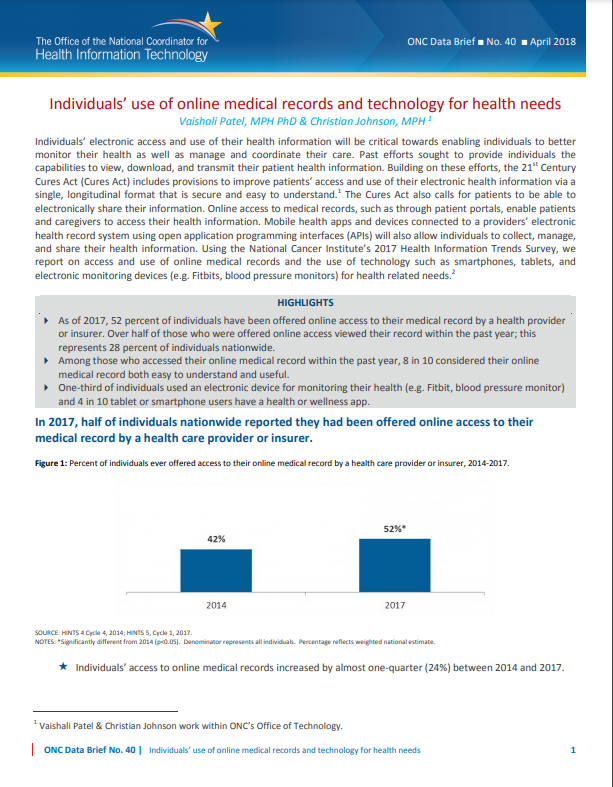
Online access to medical records, such as through patient portals, enable patients and caregivers to access their health information. Mobile health apps and devices connected to a providers' electronic health record system using open…

Electronic Health Record Adoption and Interoperability among U.S. Skilled Nursing Facilities in 2016
This data brief presents key measures on EHR adoption and interoperability from a 2016 nationally representative sample of skilled nursing facilities (SNF). It also describes the variation in EHR adoption and interoperability by SNF characteristics…
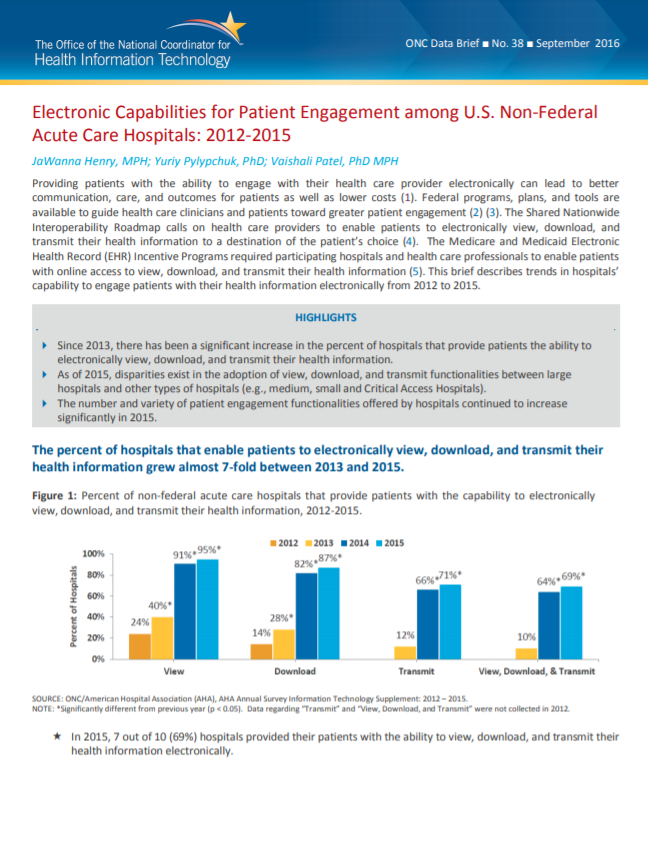
This ONC Data Brief describes trends in hospitals capability to engage patients with their health information electronically from 2012 to 2015. The percent of hospitals that enable patients to electronically view, download, and transmit their health…
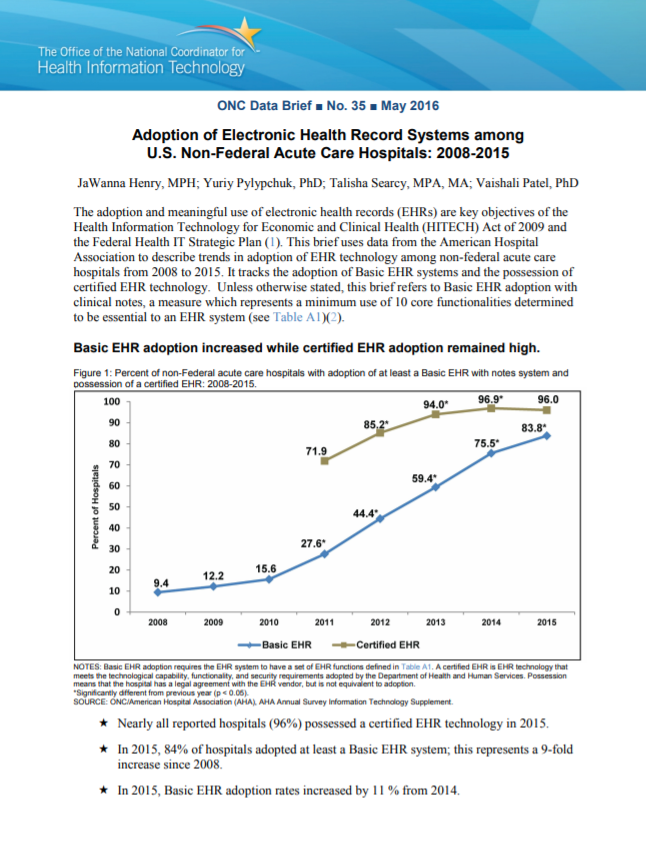
Nearly all hospitals have certified health IT and over 4 in 5 hospitals have at least a Basic EHR. This brief uses data from the American Hospital Association to describe trends in adoption of EHR technology among non-federal acute care hospitals…
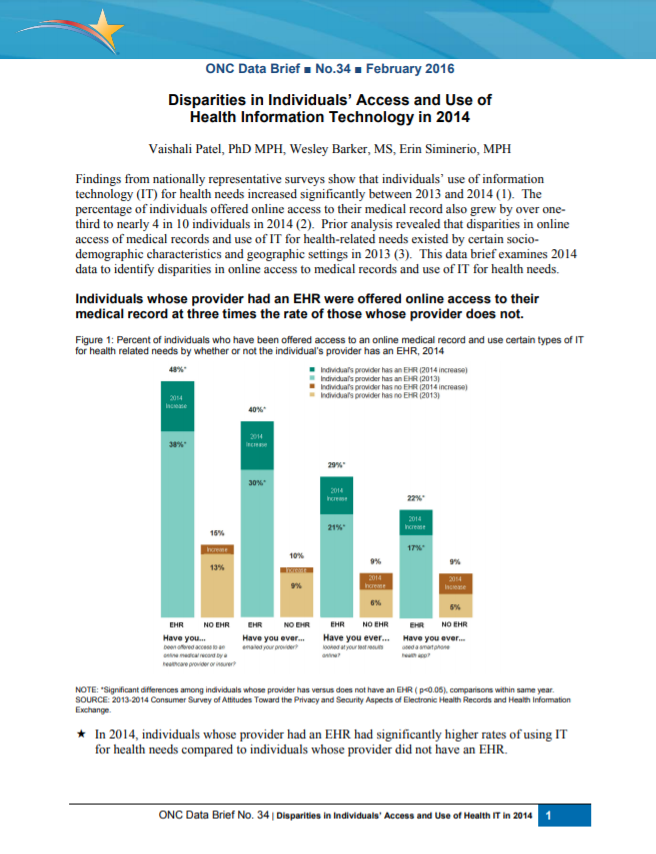
Findings from nationally representative surveys show that individuals' use of information technology (IT) for health needs increased significantly between 2013 and 2014. Prior analysis revealed that disparities in online access of medical…
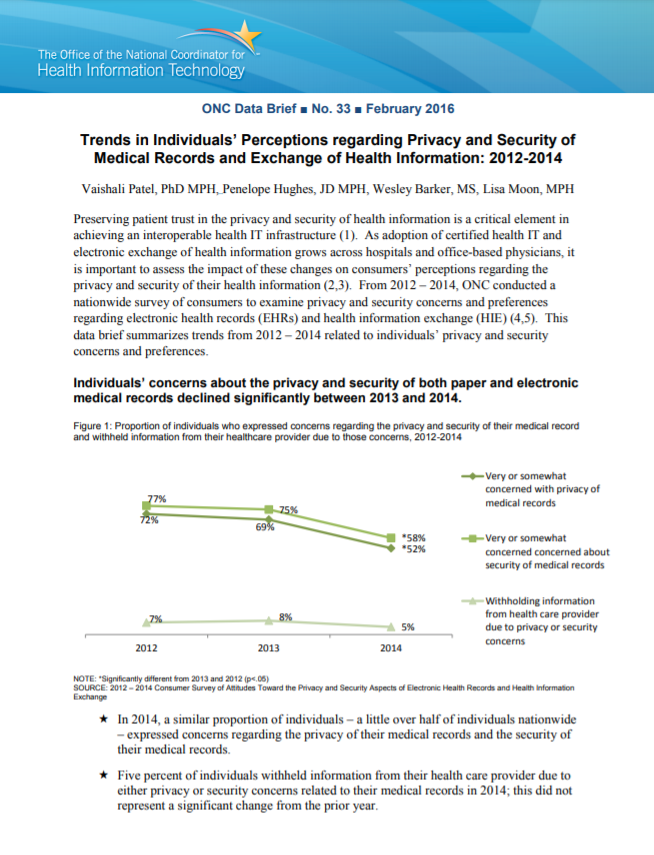
Preserving patient trust in the privacy and security of health information is a critical element in achieving an interoperable health IT infrastructure. As adoption of certified health IT and electronic exchange of health information grows across…
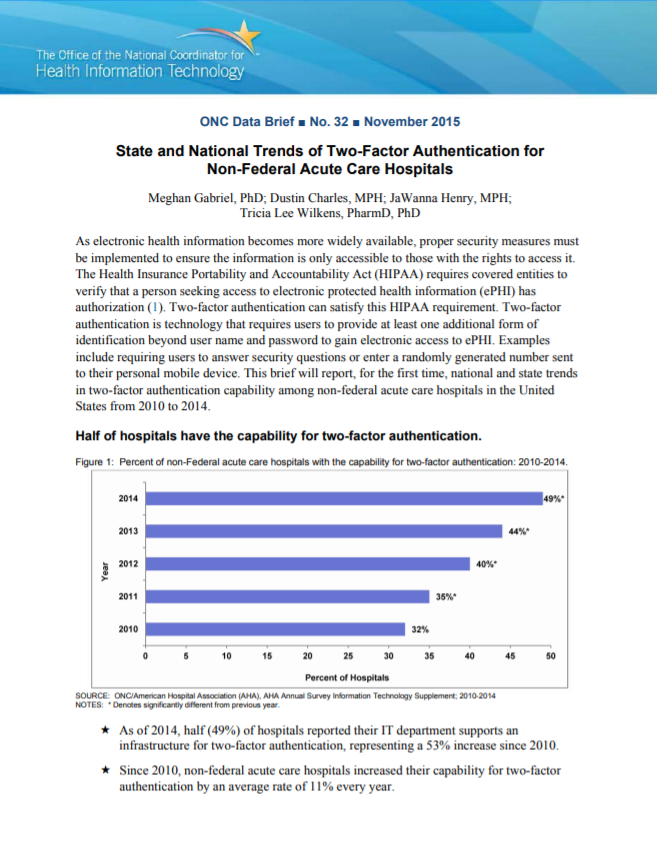
As electronic health information becomes more widely available, proper security measures must be implemented to ensure the information is only accessible to those with the rights to access it. The Health Insurance Portability and Accountability Act…
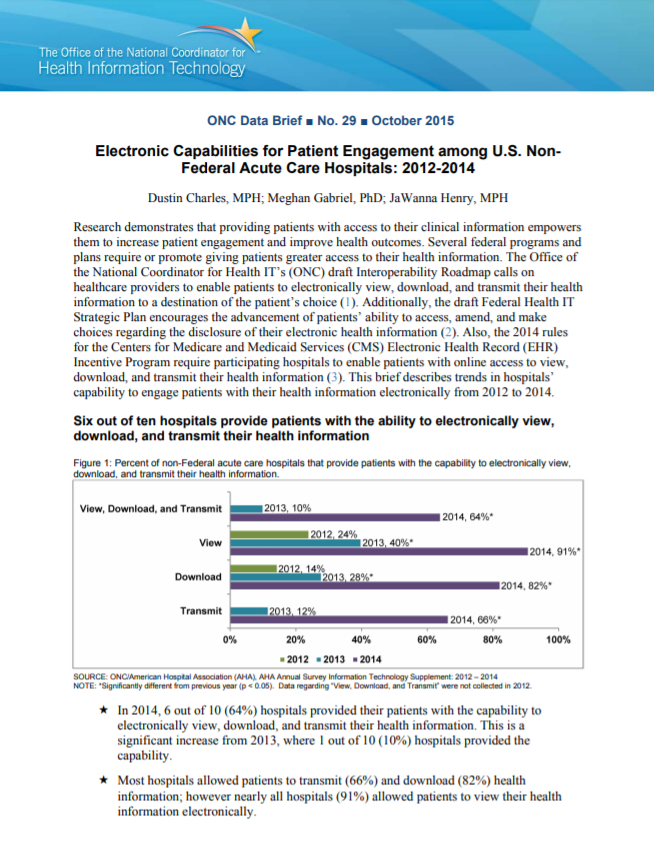
Research demonstrates that providing patients with access to their clinical information empowers them to increase patient engagement and improve health outcomes. Hospitals, which play a critical role in coordinating patient care with a variety of…

